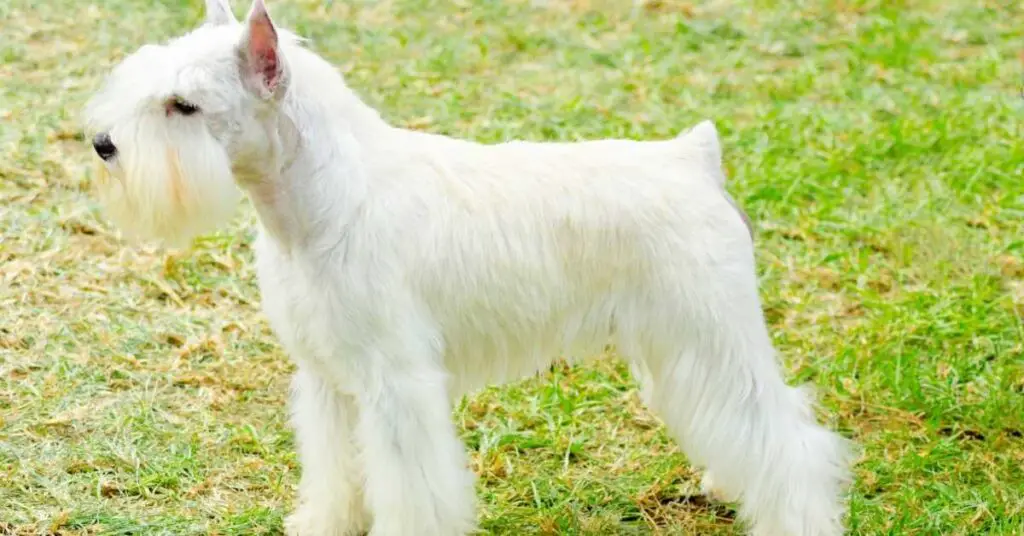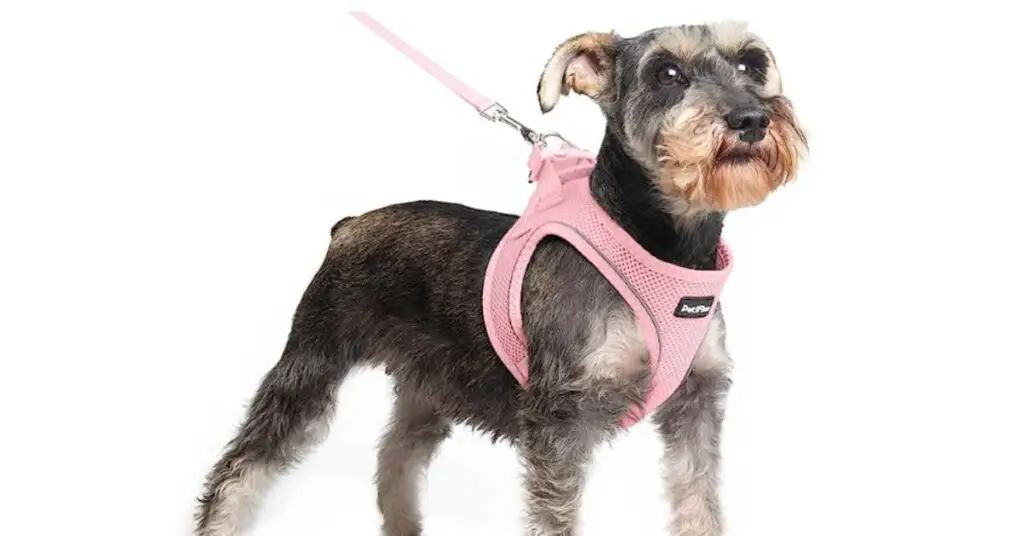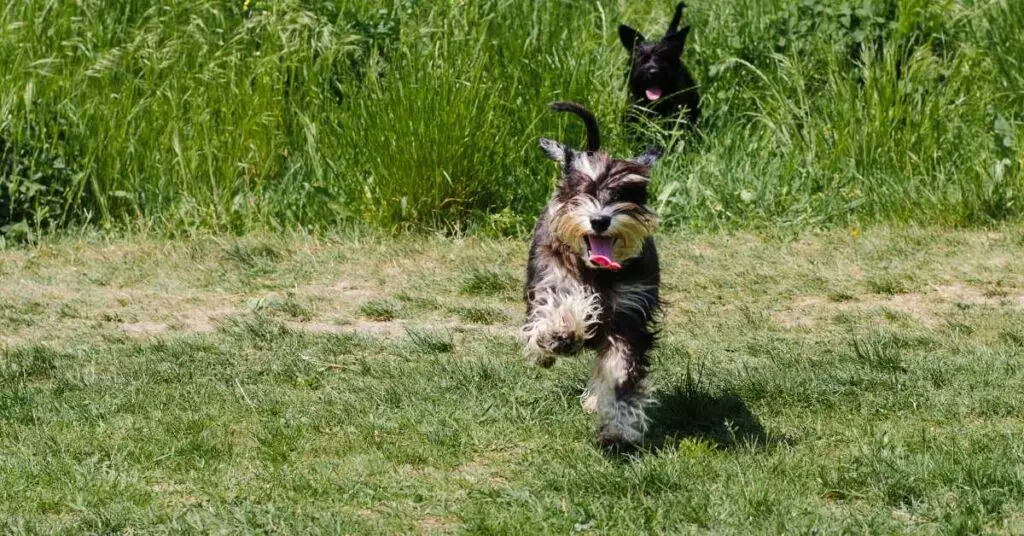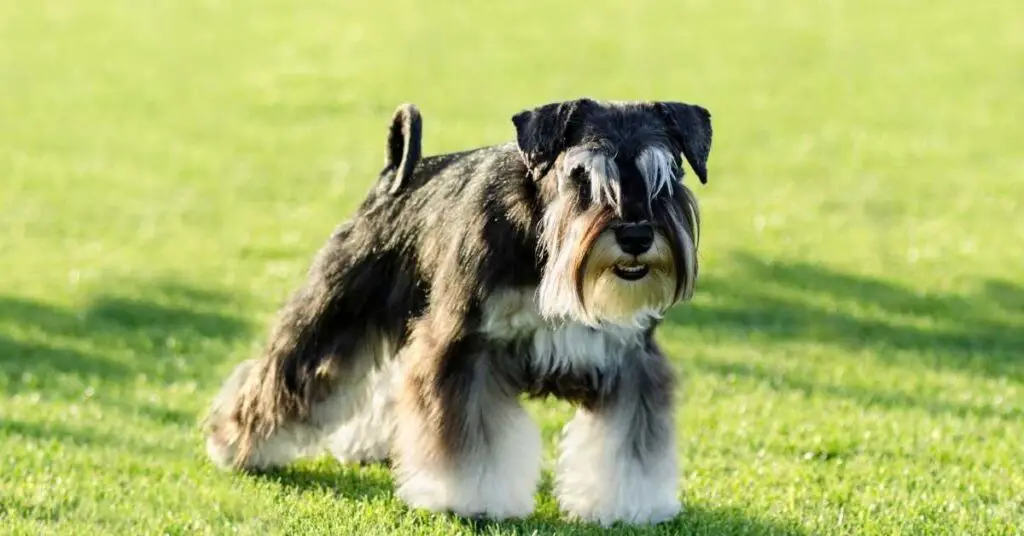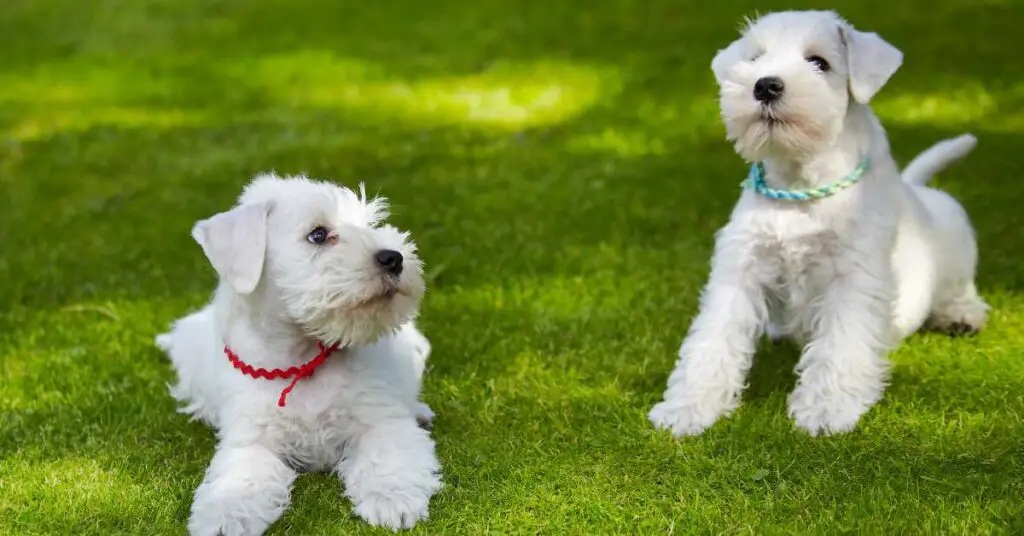In the vast world of dog breeds, each one possesses unique characteristics and abilities. Some are known for their strength and agility, while others excel in their intelligence and loyalty.
When it comes to the Miniature Schnauzer, it may not be immediately apparent whether they have a herding instinct. However, like a secret treasure hidden beneath its charming appearance, the Miniature Schnauzer indeed holds a captivating connection to the world of herding dogs.
As you delve into the history and temperament of this delightful breed, you will discover the fascinating origins of herding dogs and the defining characteristics that set them apart. Although the Miniature Schnauzer may not be a traditional herding breed, their innate alertness and intelligence lend themselves to activities that stimulate and satisfy their herding instincts.
Join us on this journey of exploration and understanding as we uncover the truth about whether a Miniature Schnauzer truly is a herding dog. Let us guide you through the fascinating world of this breed, and together, we will unravel the mysteries that lie within.
Key Takeaways
- Miniature Schnauzers were developed in Germany as a smaller version of the Standard Schnauzer and have a captivating connection to the world of herding dogs.
- They were initially bred for skills as ratters and guard dogs and possess traits such as intelligence, alertness, and problem-solving skills.
- Miniature Schnauzers have a strong prey drive and require consistency, patience, and positive reinforcement in training.
- With the right training techniques, they can excel at herding tasks and even participate in herding competitions.
The History of the Miniature Schnauzer Breed
The history of the Miniature Schnauzer breed dates back to the late 19th century. They were developed in Germany as a smaller version of the Standard Schnauzer. The development of the miniature schnauzer breed was driven by the desire to create a compact, versatile, and intelligent dog. They were initially bred for their skills as ratters and guard dogs.
However, they soon gained popularity as loyal and affectionate companions. Their distinctive appearance, with their wiry coat and bushy eyebrows, added to their charm and made them a favorite among dog lovers. Today, miniature schnauzers continue to be sought after as pets for their playful nature, adaptability, and devotion to their families.
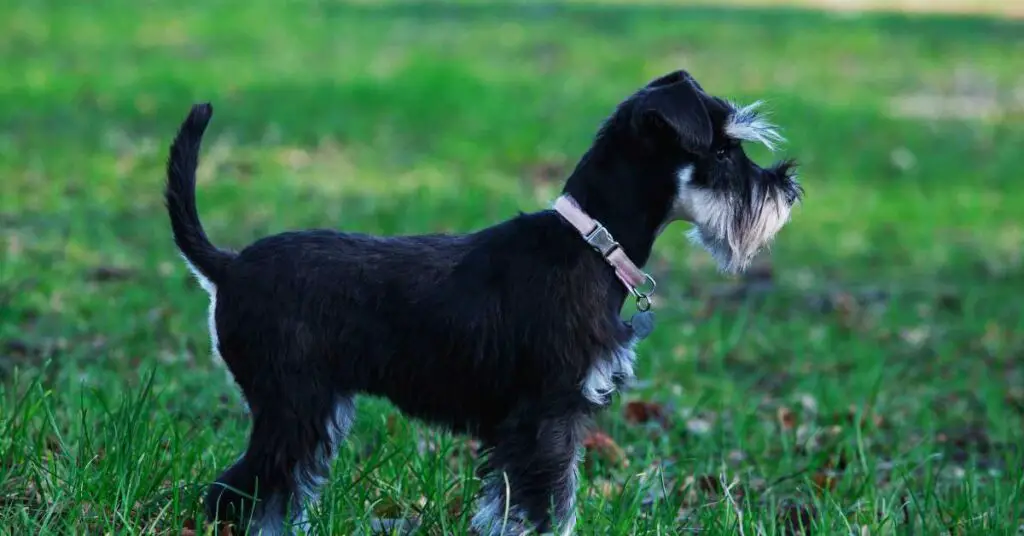
Understanding the Temperament of Miniature Schnauzers
Imagine yourself with a lively companion who loves to round up and keep you company, bringing an infectious joy to your everyday life. The temperament of Miniature Schnauzers is a key factor in why they make such great companions. However, like any breed, they can have their temperament challenges.
Miniature Schnauzers are known to be intelligent, alert, and friendly. They tend to be territorial, making them excellent watchdogs. However, this can also lead to them being wary of strangers if not properly socialized.
To ensure a well-rounded and friendly Miniature Schnauzer, socialization techniques are crucial. Exposing them to various people, animals, and environments from an early age helps them develop into confident and well-adjusted dogs. By providing positive experiences and consistent training, you can help your Miniature Schnauzer overcome any temperament challenges and become a beloved member of your family.
Exploring the Origins of Herding Dogs
Originating from the working class farms of Germany, these intelligent and agile canines have a rich heritage as skilled assistants in guiding and managing livestock. The evolution of herding dog breeds can be traced back thousands of years, when humans began domesticating animals and needed assistance in moving and controlling them.
Over time, certain breeds were selectively bred for their herding abilities, resulting in the development of specialized herding dogs. These dogs possess innate instincts and traits that make them excellent at their job, such as their ability to anticipate the movement of livestock and their strong herding drive.
In modern society, herding dogs continue to play a vital role in various industries, including agriculture, search and rescue, and law enforcement. Their intelligence, agility, and loyalty make them indispensable partners in these fields, showcasing the lasting importance of their herding heritage.
Characteristics of Traditional Herding Breeds
Get ready to discover the fascinating traits and skills that traditional herding breeds bring to the table. Did you know that these intelligent canines have been known to successfully guide livestock over vast distances, sometimes covering up to 50 miles in a single day? Traditional herding breeds possess a strong herding instinct that sets them apart from other types of dogs.
Here are some key characteristics that make them exceptional herders:
- Intelligence: Traditional herding breeds are highly intelligent, allowing them to quickly learn and understand complex commands from their handlers.
- Stamina: These dogs have an impressive amount of stamina, enabling them to keep up with livestock for long periods without tiring.
- Alertness: Traditional herding breeds have a keen sense of awareness, always keeping an eye on the livestock and their surroundings.
- Problem-solving skills: These dogs are excellent problem solvers, using their intelligence to navigate obstacles and find the most efficient way to guide the livestock.
By possessing these remarkable traits, traditional herding breeds are invaluable in the world of herding, ensuring the successful movement and management of livestock.
Miniature Schnauzer’s Alertness and Intelligence
With their sharp senses and quick thinking, you’ll find yourself amazed at how alert and intelligent these small, spirited canines can be. The Miniature Schnauzer is not traditionally classified as a herding dog, but their alertness and intelligence make them well-suited for various activities that require mental stimulation.
Alertness training is essential for this breed, as they have a natural inclination to be watchful and aware of their surroundings. Their keen sense of smell and hearing allows them to detect even the slightest changes in their environment.
To keep their minds engaged, it’s important to provide them with intelligence activities such as puzzle toys, obedience training, and scent work. These activities challenge their problem-solving abilities and keep them mentally sharp. By engaging in these activities, you can tap into the Miniature Schnauzer’s intelligence and truly appreciate their remarkable alertness.
Prey Drive in Miniature Schnauzers
The Miniature Schnauzer’s prey drive can be both fascinating and challenging to manage. This breed has a strong instinct to chase and catch small animals, which can sometimes lead to unwanted behaviors. However, with proper prey drive management, you can help redirect their natural instincts in a more controlled manner.
Here are three sub-lists that can assist you in managing your Miniature Schnauzer’s prey drive:
- Environmental Enrichment:
- Provide mental stimulation through interactive toys and puzzles.
- Create a safe and secure environment to prevent escape and hunting opportunities.
- Engage in regular exercise to tire them out and reduce their desire to chase.
- Training and Socialization:
- Teach a strong recall command to redirect their attention when they become fixated on prey.
- Socialize them with other animals from an early age to promote positive interactions.
- Use positive reinforcement techniques, such as treats and praise, to reward desired behaviors.
- Prey Drive Alternatives:
- Engage in interactive play with toys that mimic the thrill of hunting.
- Provide structured activities like agility or obedience training to channel their energy.
- Consider joining dog sports such as tracking or lure coursing to fulfill their prey drive in a controlled environment.
By implementing these strategies, you can effectively manage your Miniature Schnauzer’s prey drive and provide them with a sense of belonging in your family.
Training and Channeling Instincts in Miniature Schnauzers
Now that you understand the prey drive in Miniature Schnauzers, let’s delve into training and channeling their instincts.
Training a Miniature Schnauzer requires consistency, patience, and positive reinforcement techniques. These intelligent dogs thrive on mental stimulation, so incorporating obedience training, agility exercises, and interactive toys into their routine is essential.
Socialization is also crucial to help them develop good manners and prevent behavioral issues. Exposing them to various environments, people, and animals at a young age will ensure they grow up to be well-rounded individuals. Positive socialization methods, such as controlled interactions and supervised playdates, will help them feel secure and build confidence.
Remember, a properly trained and socialized Miniature Schnauzer will make a delightful companion and a valued member of your family.
Can Miniature Schnauzers Be Trained as Herding Dogs?
Trained properly, these intelligent and agile dogs can excel at herding tasks. Miniature Schnauzers may not be traditionally classified as herding dogs, but with the right training techniques, they can certainly participate in herding competitions.
Here are four key points to consider when training Miniature Schnauzers for herding tasks:
- Socialization: Begin early socialization to expose your Schnauzer to different animals, environments, and people. This will help them develop the necessary skills to work well with others in herding situations.
- Basic Commands: Teach your Schnauzer basic commands such as ‘come,’ ‘stay,’ and ‘leave it.’ These commands are essential for controlling your dog during herding tasks.
- Focus and Concentration: Train your Schnauzer to maintain focus and concentration, as herding requires intense concentration and the ability to follow directions.
- Positive Reinforcement: Use positive reinforcement techniques such as treats, praise, and play to motivate and reward your Schnauzer during training sessions.
By following these training techniques, your Miniature Schnauzer can thrive in herding competitions, showcasing their intelligence and agility.
Activities to Stimulate and Satisfy the Herding Instinct
To fully satisfy your herding instinct, engage in activities that will keep you on your toes, like the exhilarating rush of guiding a flock through a winding maze.
As a Miniature Schnauzer, your herding instincts can be stimulated and satisfied through various activities and training techniques. One popular activity is agility training, where you navigate through obstacles, showcasing your speed and agility. This not only provides mental stimulation but also helps you develop your coordination and problem-solving skills.
Another activity that can satisfy your herding instincts is obedience training, which teaches you to follow commands and work in harmony with your owner.
Additionally, you can participate in herding trials, where you demonstrate your ability to control livestock and guide them in specific directions. These activities not only fulfill your herding instincts but also provide you with a sense of purpose and belonging.
Managing and Controlling Prey Drive in Miniature Schnauzers
One way to manage and control prey drive in Miniature Schnauzers is by providing them with plenty of mental and physical stimulation through interactive toys and games. This helps redirect their natural instincts towards more appropriate behaviors.
Here are some ways to engage and satisfy their prey drive:
- Interactive puzzle toys: These toys require the dog to use their problem-solving skills to access treats or toys hidden inside. This provides mental stimulation and helps redirect their focus away from chasing small animals.
- Training exercises: Teaching your Miniature Schnauzer basic obedience commands and advanced tricks not only stimulates their mind but also strengthens the bond between you and your dog. This can help redirect their prey drive towards more controlled and desired behaviors.
By incorporating these strategies into your Miniature Schnauzer’s routine, you can effectively manage and control their prey drive while providing them with the mental and physical stimulation they need.
Alternatives for Fulfilling the Herding Instinct
If you’re looking for ways to fulfill your dog’s herding instinct, did you know that over 35% of herding breeds excel in dog sports like agility and flyball? These activities provide a great outlet for your miniature schnauzer’s natural herding instincts.
Interactive toys are another excellent alternative for fulfilling their herding instinct. Puzzle toys, treat-dispensing toys, and interactive games can engage their mind and simulate herding behavior. Not only will these toys keep them physically active, but they’ll also provide mental stimulation, which is crucial for a well-rounded dog.
Another option is agility training. This sport involves guiding your dog through a series of obstacles, promoting physical fitness and mental focus. It allows your miniature schnauzer to use their natural herding instincts in a controlled and structured environment.
By incorporating these alternatives, you can ensure that your miniature schnauzer’s herding instincts are fulfilled while providing them with a sense of purpose and belonging.
Conclusion: Miniature Schnauzer – Not a Traditional Herding Breed, But Still a Wonderful Companion
So, as you can see, this breed may not have a traditional herding background, but they still make an incredible and delightful companion. When it comes to training methods for miniature schnauzers, positive reinforcement is key. These dogs are highly intelligent and respond well to rewards-based training, such as treats or praise.
It’s important to establish yourself as the pack leader through consistent and firm guidance. Additionally, exercise plays a crucial role in managing their prey drive. Regular walks, interactive play sessions, and mental stimulation activities are essential to keep them physically and mentally engaged. This helps to channel their energy in a positive way, reducing the chances of them engaging in herding behavior.
Overall, while not a traditional herding breed, miniature schnauzers still possess wonderful qualities that make them an excellent choice for those seeking a loyal and loving companion.
Frequently Asked Questions
Are Miniature Schnauzers considered a traditional herding breed?
No, Miniature Schnauzers are not considered a traditional herding breed. While they may have a herding instinct, they are not typically used for training livestock. There are other alternatives for stimulating their herding instinct.
What are the characteristics of traditional herding breeds?
Characteristics of traditional herding breeds include high intelligence, strong work ethic, agility, and a natural instinct to control and move livestock. Training methods often involve positive reinforcement, consistency, and mental stimulation to harness their natural abilities.
Can Miniature Schnauzers be trained to herd livestock?
Training miniature schnauzers for herding is possible as they are intelligent, energetic, and eager to please. With proper guidance and consistent training, these versatile and adaptable dogs can excel as working dogs in livestock herding tasks.
How can the herding instinct in Miniature Schnauzers be stimulated and satisfied?
To stimulate and satisfy the herding instinct in a Miniature Schnauzer, provide mental and physical stimulation through activities like agility training or nose work. Engage in interactive play sessions that simulate herding behaviors, like chasing and retrieving toys.
What are some alternatives for fulfilling the herding instinct in Miniature Schnauzers?
To fulfill the herding instinct in miniature schnauzers, try alternative activities such as agility training, obedience trials, or interactive puzzle toys. These options provide mental and physical stimulation, helping satisfy their natural herding instincts.
Conclusion
In conclusion, while the Miniature Schnauzer isn’t considered a traditional herding breed, it still possesses qualities that make it a wonderful companion. With their alertness and intelligence, Miniature Schnauzers can be trained to engage in activities that stimulate their herding instinct.
Interestingly, a study conducted by the American Kennel Club found that Miniature Schnauzers have a high success rate in obedience trials, with 85% of them achieving titles. This statistic highlights the breed’s ability to excel in various activities, showcasing their versatility and adaptability.

